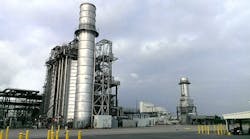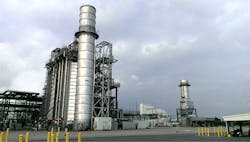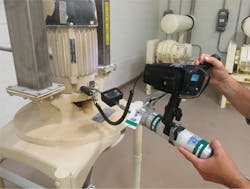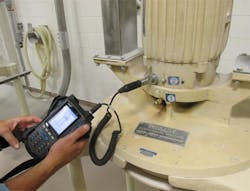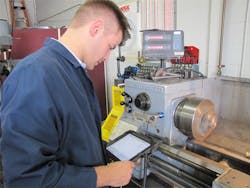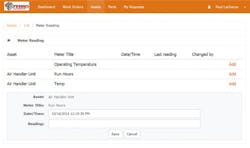Unlock your plant's predictive maintenance potential
Predictive maintenance is not only reshaping maintenance processes and priorities – it's also redefining maintenance roles and how teams communicate. Human observation and interaction is more valuable than ever.
Early iterations of PdM were stand-alone, built to serve a specific purpose, but new opportunities for data sharing and collaboration support more-robust performance. They meet the need to reach beyond organizational confines for new points of view.
“One of the most common challenges to incorporating world-class best practice is the ability to incorporate all parties in the solution: operators, maintenance technicians, reliability engineers, design engineers, industrial engineers, and even original equipment manufacturers and contractors,” says Kevin Price, enterprise asset management product director at Infor.
Thankfully, continuing advancements in PdM are improving information sharing, collaboration, and ultimately plants' bottom line. By working toward this last common goal, vendors and their customers are embracing the potential of organizational change and delivering reliability gains that were not previously possible.
Leaders in the field
Food and beverage manufacturing and power generation are among the most heavily regulated industries. The necessities of operating within that regulatory environment are among the reasons The J.M. Smucker Company and Duke Energy are ahead of the curve when it comes to PdM. "In every industry, there are leaders and laggards," remarks Mary Bunzel, portfolio manager for IoT, EAM and analytics at IBM. "The leaders are already experimenting and have the support of management to explore and learn."
The reliability team at Smucker’s has a weekly meeting with the operations team to plan out the next four weeks of scheduling; this plan gets adjusted based on the findings of the PdM technologies and defects identified by operators during their clean, inspect, and lubricate (CIL) rounds.
"We have begun to share our findings within the organization," says Joe Anderson, PM and reliability leader at The J.M. Smucker Company. "Data sharing is huge when trying to justify the need for scheduled line time to fix machine defects and also to develop credibility within the organization as experts on your assets. Everyone wins when everyone understands the importance of early failure detection and defect elimination."
"Once we were able to prove that life can be better, we made significant gains towards plant stability," he says. "Anytime you can drive defects out of your system, you will see improvements in safety, quality, environmental sustainability, throughputs, and plant stability."
Duke Energy's SmartGen project for advanced condition monitoring feeds vibration, temperature, and process data into Duke’s main Monitoring & Diagnostics (M&D) Center, and oil analysis is performed by a central lab or on-site at the larger sites. "We haven't gone with the cloud yet," says Russell Flagg, engineering technologist and CBM program owner at Duke Energy's Smith Energy Complex. "It’s a matter of security, being the largest utility in country, and our IT people are not there yet."
But, he continues: "I'll receive email notifications so I can handle issues from the plant side, and I can log in to see other plants' data if they need help with a diagnosis. Our vibration or rotating equipment experts can also access the data from anywhere in the fleet." Flagg adds: "We can call OEM rotating equipment engineers and send them data if we have a specific issue, and they have their own monitoring systems so they will send me a notification when something goes out of spec. I can also see and advise on oil analysis data."
The diagnosis is quicker and probably more accurate when you bring all that experience to bear, he explains. "I embrace it all," Flagg says. "For me, it cuts down on the time I spend monitoring acceptable running equipment."
Innovations in data sharing
A combination of modern user interface tools and integration with "smart" assets and buildings enhances users' ability to work with PdM programs, says Paul Lachance, president and CTO at Smartware Group. "There has been the ability to gather this data electronically for some time, but it was slow, expensive, and difficult."
Centralizing data makes data easier to share. At Azima DLI, "We host data centrally and serve diagnostic results to customers over a Web-browser-accessible portal," says company CEO Burt Hurlock. "The portal integrates the results of multiple PdM technologies so technicians and engineers have a single point of access for machine health diagnostics."
John Neeley, product planner and program manager for Fluke Connect Assets, says Fluke is working to make it very cheap, simple, and reliable to move the data from the tools to a place where the team can share it. "During rounds, rich measurement data automatically transfers to the smartphone and to the cloud," Neeley says. "When an alarm is triggered and the status of the asset is escalated, everybody gets a message via email or IM on their phone."
Connectivity is one of the reasons GTI Predictive Technology chose the Apple iPad as its PdM platform. "Internet and cellular connectivity through the iPad gives us instant access to cloud and internal networks," notes Paul Berberian, condition monitoring specialist at GTI Predictive Technology. "The capabilities and functions that already exist in the iPad allow us to create reports in the field that include notes, photographs, highlighted measuring locations, GPS location, etc."
M&D centers are growing in prevalence, scope, and capability. GE’s M&D center has shifted focus from monitoring only GE's equipment to helping power plant customers manage reliability and operational excellence throughout the whole plant, says Justin Eggart, general manager of fleet management power generation services for GE Power & Water.
"Every second we’re collecting a sensor value and a time stamp on a thousand different parameters – for example, on a gas turbine," he says. "Over time, the data starts to mean a lot. And it’s not just operational data; now you can bring in third-party data or the customer’s other instrumentation or ERP system data, and the opportunity to improve operational performance continues to grow."
Organizational impacts
Collaboration among internal teams
UE Systems is among many suppliers seeing more collaboration between maintenance and reliability professionals and the IT team. "I think it is being driven by the increased need for continuous monitoring, increased IT infrastructure within facilities, and an increased need for machine alarm conditions to automatically generate a work order in the CMMS/EAM," says Adrian Messer, the company's manager of U.S. operations.
The layout of facilities can play a key role in optimizing this cross-functional collaboration. "Some of the best programs that I’ve seen are where all the technicians are co-located in one area rather than in different parts of the plant," says Tim Dunton, director and instructor/developer at Reliability Solutions. "There's a huge benefit to having the IR, lubrication, and vibration technicians interact on a daily basis, face-to-face."
To support collaboration among field technicians, aggregating equipment data taken by various measurement tools in a single online database and dashboard makes sense. It allows all the trades to refer to one communication tool instead of multiple sources of information, notes Fluke's Neeley. A slight overheat of a motor detected using thermography can trigger someone else to check the vibration and another person to look at the electrical supply for an imbalance, for example.
"With our FaceTime-like feature, a technician in the field can literally call someone on their team, show them live measurements and video of the measurement point, and get their opinion," he says. "It allows senior technicians and managers to coach the personnel from any location."
Having in place an information infrastructure that encourages sharing across multiple sites also is powerful. Adds Reliability Solutions' Dunton: "The companies seeing huge benefits have taken (data sharing) beyond networking and are using the technology to set up blogs and Internet sites where they can start to exchange information. By sharing data among plants, you can really start to see trends."
Collaboration with virtual experts
Soliciting expertise from third parties helps plants avoid having to hire or train for additional skill sets. "The option to share data internally with other plants or with third-party vibration analysts is very popular," says GTI’s Berberian. "Users can compare data for like machines with other facilities and collaborate to find solutions. Third-party analysts can access data immediately to help diagnose more-challenging machine issues."
Shon Isenhour, partner at Eruditio, says his company also is now seeing plants push their PdM information to outside experts for additional feedback and analysis. "Ten years ago you pretty much had to do it all at your plant, and if you couldn’t figure it out, your only real option was to bring an outside consultant in to review the data," he notes.
Modern technology improves the quality of these services. Today, "People can email me high-resolution photos, vibration data, thermal images or other data wherever I happen to be," says Reliability Solutions' Dunton. "Thirty years ago, I'd get a grainy-looking fax and I couldn’t make anything out.”
Collaboration with equipment OEMs
IBM is seeing heightened collaboration among equipment manufacturers and plant maintenance teams. "These teams are experimenting with the types of insight available and various sorts of analytic models to measure performance against as-designed specs," says IBM’s Bunzel.
GE, for its part, is working to develop more-collaborative relationships with customers and emphasize the company's role in affecting customers' profitability. "We’re using our knowledge of GE equipment and power plants in general to develop analytics or algorithms that turn the data into something useful," remarks Eggart. "Then we collaborate with the customer wherever they are about what we see in the data and how it can be used to optimize operations at the power plant."
Many of GE's customers have their own M&D centers, he notes, but GE works to "collaborate with them on new analytics, new failure modes, and maintenance actions that may be different than those in the past."
Collaboration among PdM solution providers
Reliability solutions providers also are working together. "We work to ensure a smooth integration of ultrasound data into the customer’s CMMS/EAM software by collaborating with the software provider and sharing our knowledge and tools," says UE Systems' Messer.
"Looking at the technologies as a group rather than individual data streams allows defects to be identified even earlier," suggests Eruditio's Isenhour. "A lot of the major equipment manufacturers in the predictive field are looking at ways to get the technology to talk together so their clients can use multiple technologies to better understand equipment health."
Collaboration among industry peers
Sharing of benchmarking data improves as reliability becomes easier to measure. “The interest in reliability as a source of strategic competitive advantage has become more pronounced," says Azima DLI's Hurlock. "We see more customers comparing performance across sites to define best practices and emerging interest in benchmarking sites and enterprises against industry best practices."
Powering up PdM
As part of Duke Energy’s SmartGen project, a SmartM&D infrastructure was created to support a fleetwide network of sensors for online monitoring of critical plant equipment. All major rotating equipment was instrumented at more than 60 different plants. Around 30,000 total vibration and temperature sensors were installed; all of the equipment was modeled; and alarm levels were set. Now, anything out of normal operating range sends a notification to Duke’s main M&D center. Process data also is fed into the M&D Center. Oil analysis was consolidated so that 28 different sites now use the same laboratory; this allows one SME to review the analysis for approximately 130 generating units.
Equipment failures cost millions of dollars in lost power generation, but Duke Energy’s reliability program is slashing the losses. Avoided costs totaled $4.3 million in 2014, even though SmartGen wasn’t fully operational at all the plants until late that year. In the first seven months of 2015, the avoided costs totaled $5.85 million.
Adds GE's Eggart: "Our software takes Operational Reliability Analysis Program (ORAP) industry data and consolidates it into dashboards, so customers can benchmark their reliability or performance against other similar power plants around the world. Nobody ever wants to be at the bottom; they want to be in the top quartile."
Advice from the pros
To maximize PdM's potential to yield competitive advantages, Anderson at Smucker’s offers these recommendations:
- Understand the business need for PdM and quantify your business case.
- Become great at capturing every failure that has been identified early and fixed; turn it into a cost avoidance; and share those numbers with everyone who will listen.
- Educate everyone on the basics of each technology and why they are important to your process.
- Have a great time bragging about the accomplishments of your people and reward early and often.
"Big data is here and changing the way PdM is done,” says Duke Energy’s Flagg. “It’s more analytical and data-driven, and you’re letting the computer do a lot of work that you used to do, so you can pay attention to the things that are misbehaving. But you have to be open to change. Have confidence in the software and the experts who are driving the program. We all use it and it works. A few people still don’t believe it, but I’m working on them."
Even a little success begets more success, explains GE’s Eggart. “We hear things like, ‘I saved $2 million on fuel costs last year because of this. Let’s collaborate some more.’ Once something works, people want to expand it. The money saved is real.”
